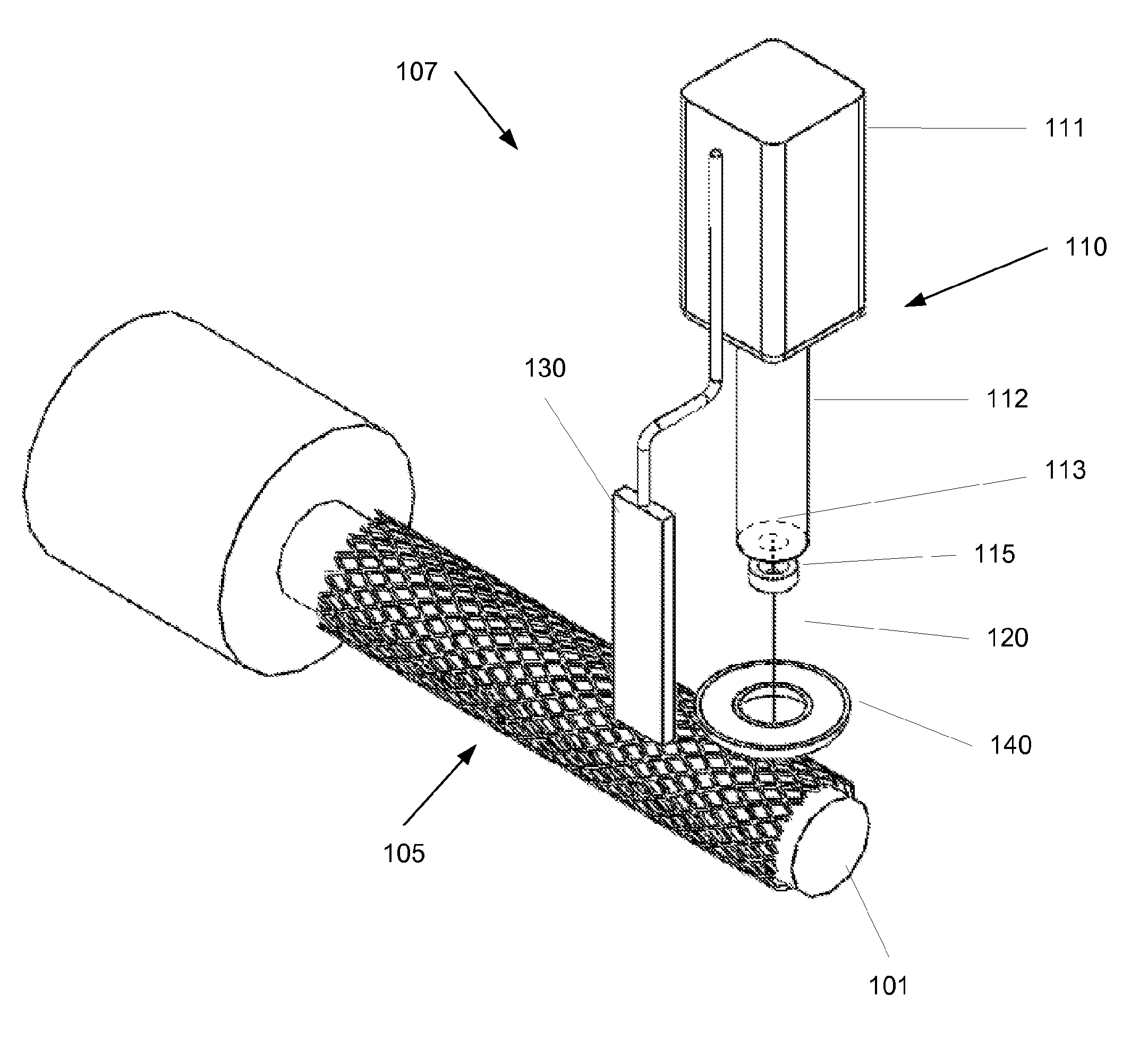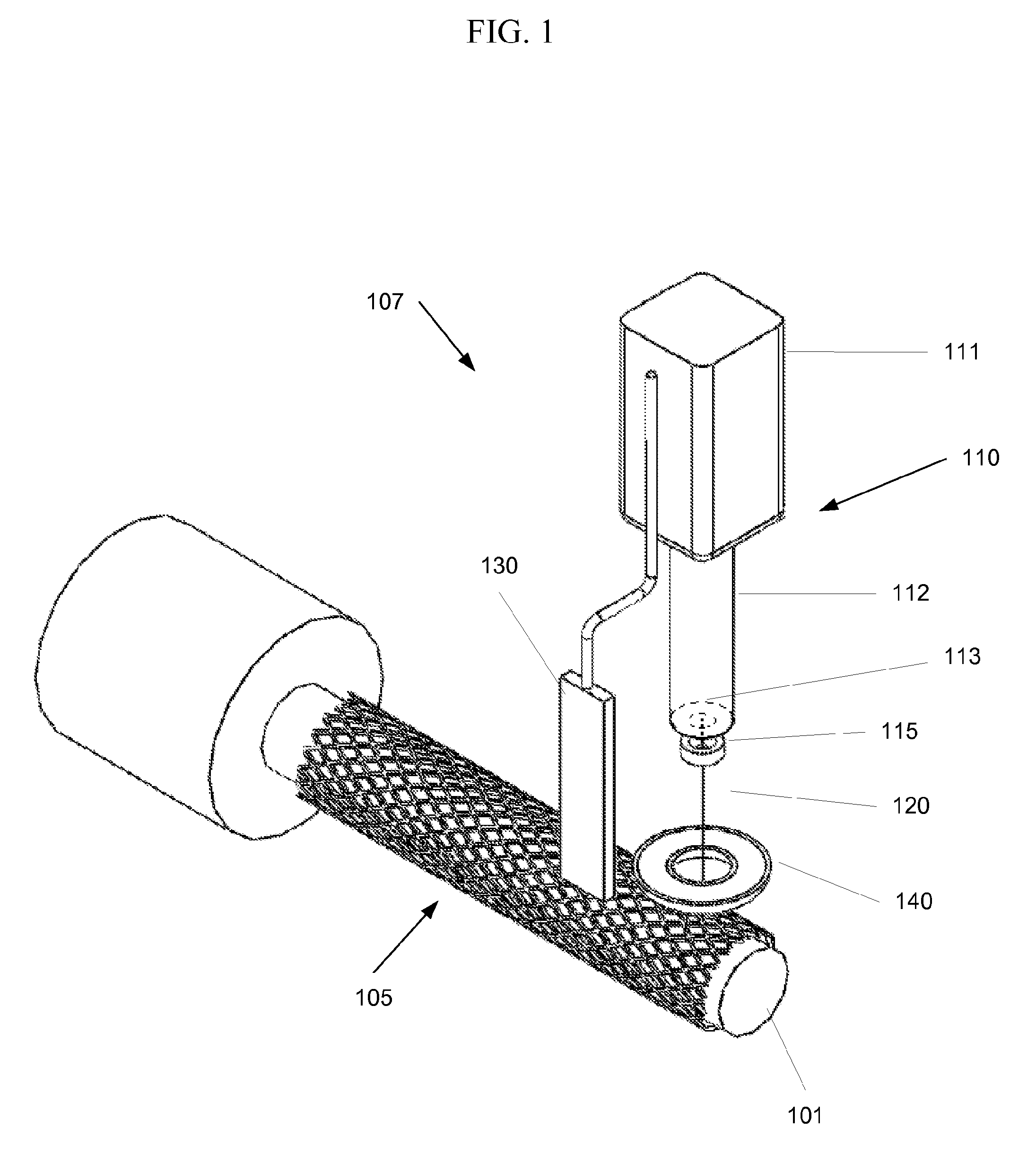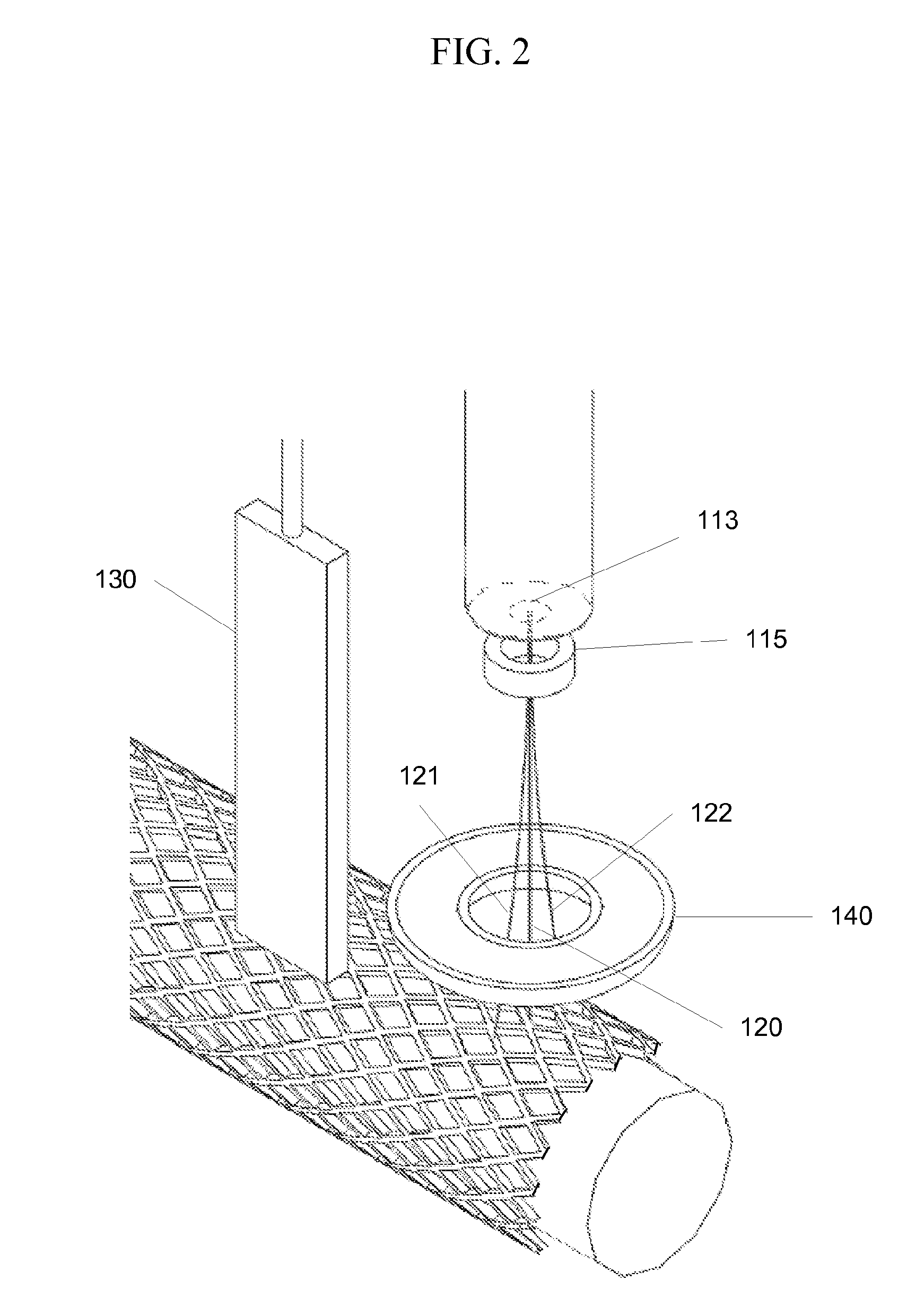Microdrop ablumenal coating system and method
a microdrop and ablumenal technology, applied in the field of coating medical devices, can solve the problems of affecting the kinetic release rate of coatings with embedded drug particles, low deposition efficiency of conventional gas-assist methods delivered by high-speed gas streams, and waste of remaining 95% of coating solution, etc., to achieve the effect of steady flow of microdrops
- Summary
- Abstract
- Description
- Claims
- Application Information
AI Technical Summary
Benefits of technology
Problems solved by technology
Method used
Image
Examples
Embodiment Construction
[0018]FIG. 1 shows an embodiment of the invention. A deposition system 107 is used to deposit a coating onto a medical device 105, such as a stent. The medical device 105 is positioned on a support 101. For example, when a stent it to be coated it may be placed on a cylindrical support. The support 101 and the deposition system 107 may be positionable relative to each other. For example, in the system shown in FIG. 1 the support 101 may be rotated by an operator or a control system, and the deposition system 107 may be translated along the length of the medical device 105. In another embodiment, the medical device 105 may be held on a stationary support 101 while the deposition system 107 rotates around the device, translates along its length, or both. In yet another embodiment, the deposition system may be stationary while the support 101 may rotate around the longitudinal axis of the support 101 and / or translate in a direction along its axis. Other configurations may be used. For ...
PUM
 Login to View More
Login to View More Abstract
Description
Claims
Application Information
 Login to View More
Login to View More - R&D
- Intellectual Property
- Life Sciences
- Materials
- Tech Scout
- Unparalleled Data Quality
- Higher Quality Content
- 60% Fewer Hallucinations
Browse by: Latest US Patents, China's latest patents, Technical Efficacy Thesaurus, Application Domain, Technology Topic, Popular Technical Reports.
© 2025 PatSnap. All rights reserved.Legal|Privacy policy|Modern Slavery Act Transparency Statement|Sitemap|About US| Contact US: help@patsnap.com



